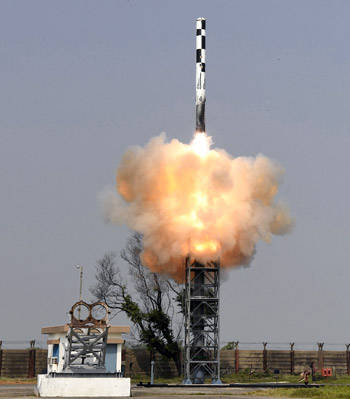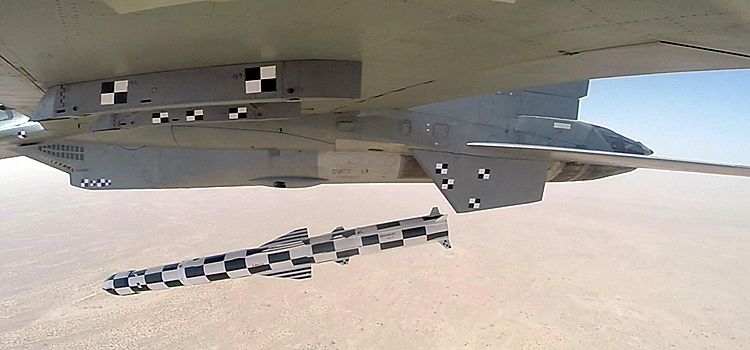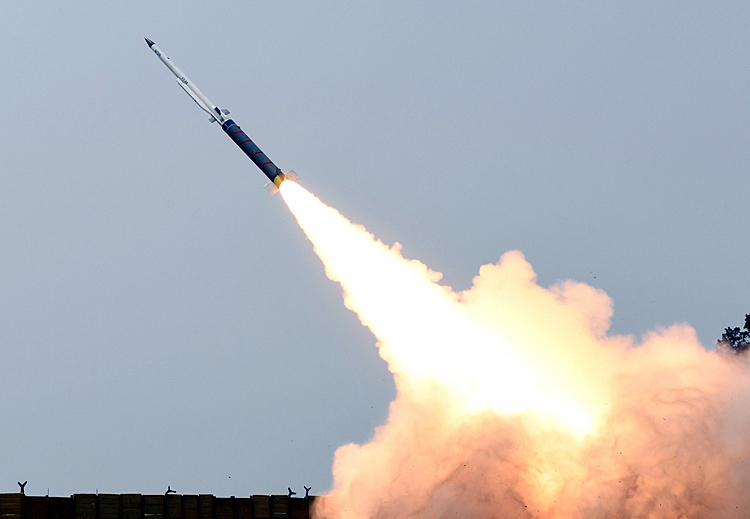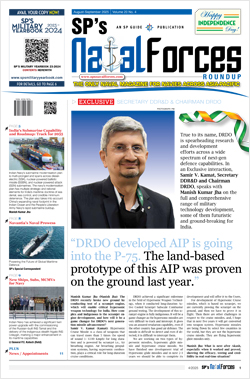INDIAN ARMED FORCES CHIEFS ON OUR RELENTLESS AND FOCUSED PUBLISHING EFFORTS

The insightful articles, inspiring narrations and analytical perspectives presented by the Editorial Team, establish an alluring connect with the reader. My compliments and best wishes to SP Guide Publications.

"Over the past 60 years, the growth of SP Guide Publications has mirrored the rising stature of Indian Navy. Its well-researched and informative magazines on Defence and Aerospace sector have served to shape an educated opinion of our military personnel, policy makers and the public alike. I wish SP's Publication team continued success, fair winds and following seas in all future endeavour!"

Since, its inception in 1964, SP Guide Publications has consistently demonstrated commitment to high-quality journalism in the aerospace and defence sectors, earning a well-deserved reputation as Asia's largest media house in this domain. I wish SP Guide Publications continued success in its pursuit of excellence.
- Operation Sindoor: Resolute yet Restrained
- Advanced MRSAM for India for a greater firepower
- Japan and India set forth a defence cooperation consultancy framework, talks on tank and jet engines
- Uri, Pulwama and now Pahalgam
- Terrorist Attack in Pahalgam in Kashmir: Unfolding a long surgical war against PAK
BrahMos-II and Indigenous Star Missile
The success of precision weapons during Operation 'Sindoor' has renewed focus on the development of advanced cruise missiles like BrahMos-II hypersonic and DRDO's Star missile project
 |
The Author is Former Director General of Information Systems and A Special Forces Veteran, Indian Army |

The BrahMos system, a joint venture between the DRDO and Russia's NPO Mashinostroyenia, named BrahMos Aerospace, has undergone over 130 tests, leading to continuous enhancement. It currently stands as the world's fastest supersonic cruise missile, operating at Mach 3.5 with a range of up to 650 km.
Now news reports of May 20, 2025 have stated that India's ambition for a hypersonic cruise missile, the BrahMos-II, capable of reaching speed of Mach 7-8, is set to be powered by an indigenously developed scramjet engine, according to Dr Sudhir Kumar Mishra, former head of BrahMos Aerospace. It is obvious that post Operation 'Sindoor', India's military landscape is no longer just about showcasing firepower, it's about creating a sustainable, innovation-driven industrial base. The ongoing development of the BrahMos-II hypersonic cruise missile is a major leap in indigenous defence technology.
India's ambition for a hypersonic cruise missile, the BrahMos-II, capable of reaching speed of Mach 7-8, is set to be powered by an indigenously developed scramjet engine

On April 25, 2025, ISRO scientists successfully conducted the ground test for a scramjet engine combustor for an unprecedented duration of over 1,000 seconds, which has led to the advanced propulsion system for the BrahMos-II. The scramjet engine designed to operate at speeds greater than Mach 5 (over 6,100 km/h), employs novel flame stabilisation methods and a specially developed indigenous endothermic fuel, created in collaboration with industry partners, to improve cooling and ignition. The engine's resilience under the intense heat of hypersonic flight is further ensured by advanced ceramic thermal barrier coatings, which can withstand temperatures that would melt steel.
The DRDO Test for the advanced propulsion engine took place at the Scramjet Connect Facility of the Defence Research and Development Laboratory (DRDL) in Hyderabad. The test conducted by the DRDO validated the design of the subscale scramjet combustor intended for long-duration flight and featuring active cooling. The engine sustained combustion for more than 16 minutes, reportedly the longest such test conducted globally. This achievement highlights India's progress crucial areas like thermal management, the durability of materials under extreme conditions, and stable combustion at hypersonic speeds.
ISRO scientists successfully conducted the ground test for a scramjet engine combustor for an unprecedented duration of over 1,000 seconds, which has led to the advanced propulsion system for the BrahMos-II
Dr Mishra stressed the reliability and international standing of India's missile system, remarking that choices by other countries for Indian systems like BrahMos affirm their superior quality. He described the existing BrahMos missile as a highly effective and versatile weapon, renowned for its exceptional precision and destructive power, making it difficult to intercept. The reliability of the BrahMos is demonstrated by substantial orders, including over 200 air-launched BrahMos-A missiles for the Indian Air Force (IAF) and recent naval contracts for 220 missiles. The forthcoming BrahMos-II is anticipated to significantly surpass these capabilities, with expected speeds of Mach 7-8 and a range of 1,500 km. Russia's 3M22 Zircon missile has a speed of Mach 8 and a range of 500-1,000 km. Notably, BrahMos-II will integrate India's scramjet engine.

The destruction unleashed in Pakistan by BrahMos missiles during Operation 'Sindoor' is legendry, with 20 per cent of Pakistan's Air Force infrastructure destroyed. Now the success of the 1,000-second scramjet engine test firmly places India among the leading nations in hypersonic technology, with its duration surpassing achievements like America's X-51A Waverider Test, which flew for 240 seconds, and positioning India competitively with research efforts in Russia and China. BrahMos-II is a transformative weapon system that reportedly could be ready for deployment in approximately four years. This would offer a significantly enhanced deterrence against India's potential adversaries. With a range of 1,500 km the hypersonic BrahMos-II would truly be a gamechanger for India as its impact on targets would be annihilating with the even higher kinetic energy acquired by it during flight with its Mach 7-8 top speed and minimal CEP. In future, the DRDO could even integrate thrust vectoring on BrahMos to make it highly manoeuvrable, like the German IRIS-T missile already does it, with the 'T' designation denoting defensive and counter capabilities.
BrahMos-II is a transformative weapon system that reportedly could be ready for deployment in approximately four years.
Concurrently, the DRDO's STAR Missile project has entered Phase-III development, focussed on full-system integration and advanced validation trials; integrating all subsystems, including propulsion, guidance, and control, into a full-scale prototype. The missile is to undergo multiple live trials under simulated combat conditions to evaluate accuracy, reliability, and overall performance; to ensure the missile meets operational requirements before entering production.

This indigenous programme aims to provide a cost-effective way to train personnel and improve response strategies against future aerial threats. Additionally, the technology has potential applications beyond training and could become an affordable alternative to BrahMos and other missiles. The STAR Missile has a speed of over Mach 2.5, matching the speed of modern anti-ship cruise and standoff weapons. It performs sharp manoeuvres and rapid altitude changes, forcing operators to use advanced tracking and engagement systems under pressure. The missile's modular design allows rapid reconfiguration based on mission profiles, terrain requirements, and service-specific deployment needs. DRDO can modify STAR to fulfil training and strike simulation roles across the tri-services. During Operation 'Sindoor' India used “Banshee Target” drones as decoys and decoys like STAR will be more useful.
DRDO's STAR Missile project has entered Phase-III development, focussed on full-system integration and advanced validation trials
DRDO is also developing an air-launched STAR version for fighter platforms LCA Tejas; which could support Anti-Radiation and Anti-AWACS missions by offering target realism and engagement readiness at tactical range. The ground-based version serves as a versatile tool in simulating surface-to-surface or shore-to-ship supersonic missile engagements; the missile can be deployed across rugged or remote locations without expensive setup or launch infrastructure.
The missile uses a Liquid Fuel Ramjet engine that breathes atmospheric air during flight for sustained high-speed travel. The design reduces internal fuel load, lowers weight, and increases flight duration without compromising speed or manoeuvrability. The STAR missile, with a speed of Mach 1.8 to 2.5, altitude range of 100m to 10-km. operational range of 55-175 km and flight time of 50-200 seconds, also acts as a live test platform for DRDO's ramjet engine programmes and future missile propulsion development efforts.





